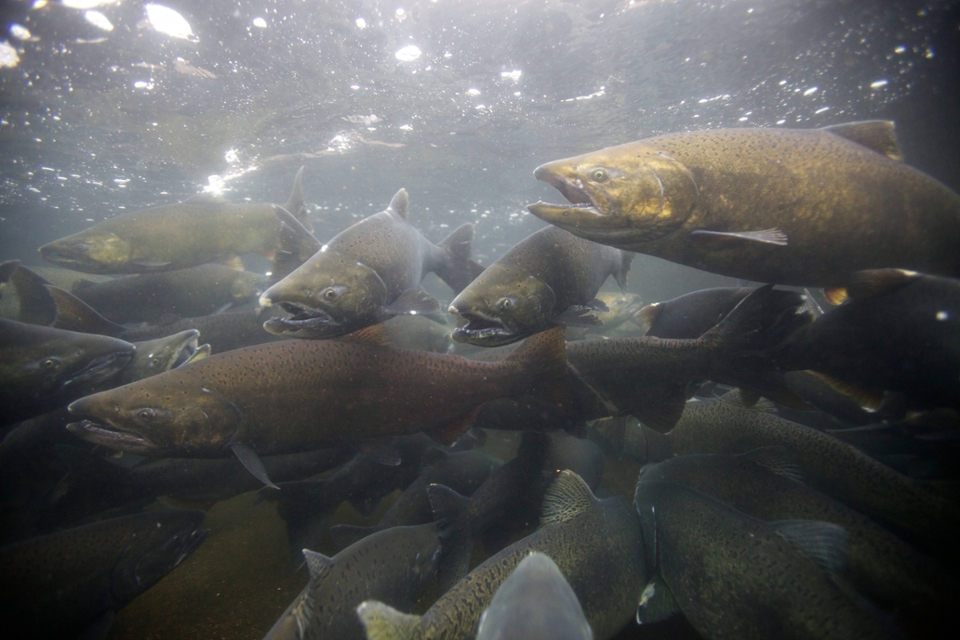New study highlights the role of overlooked ecological factors in salmon restoration success

In the Methow River of northern Washington state, imperiled populations of salmon and steelhead are at a mere fraction of their historic numbers. Restoration efforts can help bring back these populations, but how do managers prioritize which methods to employ, and where?
A recent study led by University of Alaska Southeast researcher Emily Whitney at the Alaska Coastal Rainforest Center, in collaboration with Ryan Bellmore at the USDA Forest Service Pacific Northwest Research Station and others, has found that the potential success of restoration efforts varies widely across watersheds, largely based on environmental factors that are often not evaluated in restoration planning.
In prioritizing restoration projects, managers frequently undergo watershed assessments that focus on the structural landforms of the area like the shape and size of flood plains, riparian areas, and the surrounding landscape. Often left out of these assessments, however, are biological and environmental factors like water temperature, nutrient availability, canopy cover, and the structure of food webs. The researchers found that these non-structural environmental factors strongly control the outcomes of restoration efforts, making them an important consideration for restoration planning and prioritization.
The study assessed three common riverine restoration tactics across 12 sites on the Methow River; increasing the amount of suitable habitat for fish rearing; increasing the food resource availability by adding salmon carcasses to the stream, and changing the inputs of plant organic matter and light by increasing riparian vegetation cover. They used an ecosystem simulation model, the Aquatic Trophic Productivity model, that links river food web dynamics and the biomass of fish and invertebrates with the physical conditions of a stream and the inputs of nutrients and organic matter from the surrounding areas.
To see how the biomass of juvenile salmon responded to restoration efforts in various sites, the researchers ran the ATP model for a simulated period of 10 years, and then looked at how much the salmon biomass of the site had changed compared to the same site with no restoration treatment. They found that responses to the three restoration methods varied significantly between sites, with some sites showing large increases in fish biomass, while others showed no change at all.
The results showed that fish biomass was strongly controlled by variation in surrounding nutrient availability, riparian vegetation cover and shading, and water temperature. Different locations were also more responsive to certain restoration actions than others, depending on factors limiting local fish populations. For example, physical habitat restoration was most effective in sites that had limited suitable habitat for juvenile fish, while salmon carcass and riparian vegetation additions were more successful at sites with adequate fish habitat, but limited food resource availability. Finally, the structure of the food web of each site strongly influenced the magnitude of fish responses to river restoration. More complex, multi-species food webs typically showed less response to restoration efforts but in some cases the opposite was true, a finding that the researchers did not anticipate.
“There are different factors that interact at each of these sites. The response to the modeled restoration is tied to the baseline conditions, what’s actually limiting productivity at those sites, and how energy is being routed through the food web. When you add additional food web members, it affects the food resources available to consumers. When you start shifting those things around, they interact together to produce what I think was one of the more surprising pieces for us,” said Whitney.
Whitney and coauthors highlight the need to apply stream ecology knowledge and food web dynamics to stream restoration planning and prioritization. Dynamic food web models such as the ATP model (available online) that link the structure of local food webs and the success of organisms in the web to the physical and ecological conditions of rivers can help managers meet this need.
“We show that expected outcomes from river restoration are context-dependent and that this context involves both the abiotic and biotic conditions of rivers. This means that restoration that is successful at recovering ecological conditions at one location in a river network may not be successful at other locations,” concluded the authors.